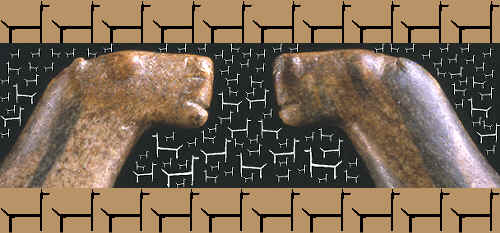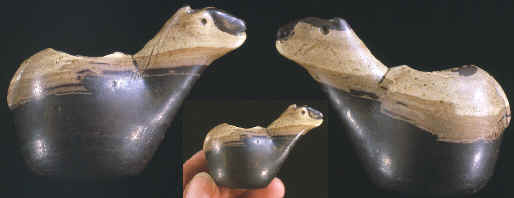|
||
|
||
|
"The (Spanish) priests confiscated 3,418 conopas in some 31 settlements in the Archbishopric of Lima alone".---Spanish occupation in the years between 1617-18.
The Inca dynasty began sometime around 1200 A.D. By the early part of the fifteenth century (1400's) the Inca culture was very well established. The capital and ruling center was Cuzco. It was at this time that the Inca rulers began the greatest territorial expansion of any culture before European contact in the Americas. This is also the period in time when historians are able to accurately record early Incan history by separating myths and legends with known facts about dynastic leaders and territorial expansion. The Inca culture had no written language so their history has been recorded from verbal accounts and archaeological excavations. |
||
|
The Incan empire had reached its "golden age" or fullest cultural development just a few years before the Spanish commander Francisco Pizarro entered Incan territory for the first time in 1531. The Incan territory had expanded to nearly 386,000 square miles absorbing over a hundred societies with millions of people. But only six years before the arrival of the Spanish, smallpox had entered the region and decimated the population. The epidemic was the beginning of the end. But it had run its course by the time of Pizarro's arrival and wasn't the main reason for the defeat of the Incan people by such a small invading force. |
||
|
Pizarro met with the Inca ruler Atahuallpa on the 16th of November in 1532. Atahuallpa had 30,000 armed and seasoned warriors with him and Pizarro had 168 men and about 30 horses. Pizarros' men kidnapped the Inca ruler, killing his honor guard and 6,000 Inca warriors in two hours without suffering a single casualty. By 1537 the Spanish had unalterably taken control over the Inca empire. The last significant resistance was in 1536 at Cuzco where the Spanish were surrounded for a year by an army of 100,000 Incan warriors. A relief army finally came to their aid from the south and in the end the Spanish loss was about 20 men. The success of the Spanish has been credited to there horses and metal weapons. |
||
|
The most important domesticated animals, that were in fact essential for the economic development of the Inca people were guinea pigs, alpacas and llamas. So it's not surprising that alpacas and llamas are so highly revered even to this day. Lamas might be compared to the importance of bison to the plains Indians of the American west. Lamas are a source of wool for weaving cloth, meat, milk and they're also beasts of burden. One animal can transport as much as 65 pounds (30 kg). The Spanish recorded that some caravans used hundreds and even thousands of llamas for transporting goods from one area to another. |
||
| CONTINUE ON TO PAGE TWO | ||
|
"REFERENCES"
1946, "Handbook
of South American Indians", "Vol. 2 The Andean
Civilizations" by Julian H. Steward, Editor, |
||





